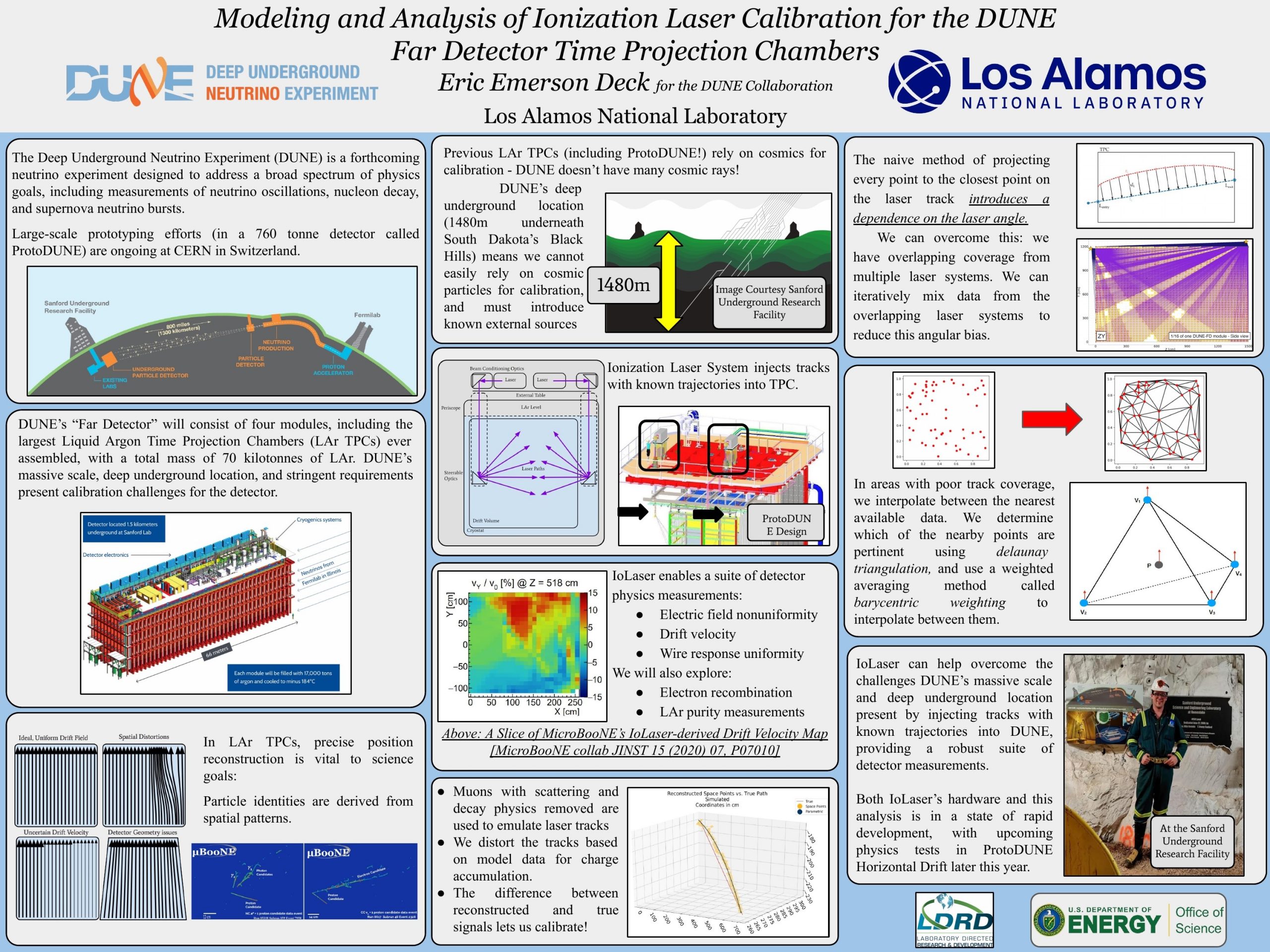Zoom Presentation Registration: https://fnal.zoom.us/j/2996063615?pwd=cmpaNWlYQ2t2TXF3SlFLZlozelpMZz09
The Deep Underground Neutrino Experiment (DUNE) is a next-generation neutrino oscillation experiment consisting of a near detector at Fermilab and a far detector located 1,480 meters underground and 1285 km away in Lead, South Dakota. The far detector will consist of four modules, at least three of which will be Liquid Argon Time Projection Chambers (TPC), intersecting the neutrino beam produced at Fermilab. Among other physics goals, DUNE will measure charge-parity violation in neutrinos, a possible mechanism allowing for matter-antimatter asymmetry to arise in the early universe. At 17 kilotonnes per module, DUNE’s TPCs will be the largest of their kind, resulting in new instrumentation challenges. As TPCs grow in size, improved calibration techniques are required to ensure accurate position and energy reconstruction. DUNE will require fine-grained measurement of detector response parameters such as electric field distortions, electron drift velocity, and defects such as cathode-anode misalignment. DUNE’s Ionization Laser (IoLaser) system will enable these measurements by generating tracks of known origin and direction throughout the active volume. In this poster, I will explain how the signals introduced by this calibration hardware can be converted to a robust measurement of electric field uniformity in the DUNE TPC, with a focus on the analysis and data science methods used.
Return to Main Poster Presentation
To enlarge the poster, double-click on the image.

